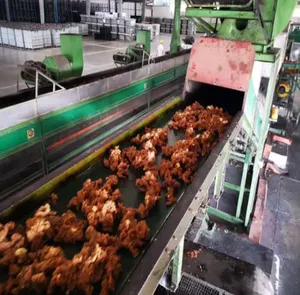New Delhi: The recent joint announcement by Honda and Nissan to explore working together marks yet another step forward in the consolidation of Japan’s auto industry. According to industry sources, it is a clear acknowledgement of today’s global realities where the Chinese are forging ahead in the electric vehicle arena. “Japan has been a laggard in comparison and this move by Honda and Nissan to team up for electrification is proof of this fact,” says an auto sector official. In his view, forming deep relationships is the only way out for automakers to stay afloat in this competitive era of manufacturing EVs, more so when they are up against a formidable opponent like China. The country has already signalled its intent to ship out its range to a host of countries in South America and ASEAN with Europe and the UK also on its radar. The killer combination of top- end features and an affordable price tag are enough to draw buyers from across the world to Chinese EVs. It is precisely for this reason that Europe is already under pressure from its carmakers to impose tariffs on EVs imported from China with the US likely to follow suit for Chinese car brands that could be shipped out from their facilities in Mexico. Japan vs. China In this backdrop, it is now getting increasingly apparent that Japan’s dominant position in the automobile industry is under even greater pressure thanks to the EV blitzkrieg emanating from China. Sure, Toyota continues to be the world’s largest carmaker but going solo is not the answer if it means standing up to the challenges of tomorrow. This also puts in context why Toyota has been at the forefront in sewingup some key alliances as part of the effort to stay ahead of the race. In2017, it announced a partnership with Suzuki Motor Corporation with aneye on India and other emerging markets like Africa and Latin America.Suzuki is the market leader in India and Toyota has not been able tomake much of a dent there except for one successful brand in the formof Innova. However, over the past six years since this alliance came into being, boththe companies have been collaborating on key areas like productdevelopment and ushering in cleaner fuel options for the Indian market.There could be some even bigger developments in the near future likeglobal products and other technological breakthroughs which will putthe Toyota-Suzuki partnership on a strong wicket. Toyota also has a stake in another Japanese brand, Mazda, where theidea is to grow in North America which is clearly among its mostimportant markets. Then there is Daihatsu, another Toyota groupcompany, whose prowess will be leveraged for the ASEAN region. Renault alliance In the case of Honda and Nissan, it is still not clear how this will pan outin terms of a strategic roadmap. The latter has had a strong partnershipof over two decades with Renault of France even while the structure haschanged in recent times with Nissan now having a greater say than in thepast. Honda had entered into an agreement with General Motors to produceelectric vehicles but the two called it off last October since it did notlook too viable. Perhaps this prompted the Japanese carmaker to joinhands with Nissan and, in the process, take the consolidation script inJapan to the next level. It perhaps needs to be mentioned here thatNissan also has a stake in Mitsubishi, acquired in 2016 when the latterwas literally down and out. Incidentally, there was a time when the Japanese automakers like Suzukiwere in global partnerships which were working quite well. The alliancewith GM, for instance, was coming along nicely till the two decided tocall it quits and the next big ticket brand Suzuki opted for wasVolkswagen where the script just went horribly wrong. The parting of ways was not pleasant and it was at this point in time thatToyota stepped into the picture. The alliance has had no glitches thus farand this is also owing to the fact that there is a greater level of culturalconvergence and mutual respect among Japanese companies. Case for unity Nissan and Renault also had a successful relationship even though it wasnot exactly on even terms. This is what raised the former’s hackles whichthen led to a series of dramatic developments starting with the arrest ofCarlos Ghosn, Chairman of Renault-Nissan, followed by more upheavalsat the leadership level and finally a restructuring of the alliance. With Honda now as its partner for EVs, there will be obvious questionson the relevance of the Renault partnership going forward. Will Hondaalso play a role here along with Mitsubishi? These are early days yet toseek answers but, from the viewpoint of Japan’s auto industry, thepragmatic solution is that in unity lies strength. A section of industry observers believes that the Japanese governmenthas been pushing for greater consolidation among its automakersfraternity since this is the only way to stand up now competitionemerging in the form of the Chinese. Even in the two-wheeler arena.Honda and Yamaha which were bitter foes for decades teamed up in 2016for joint development of 50cc scooters which is a niche segment inJapan. While this may not have seemed too significant, it still marked abeginning in building new bonds between two erstwhile rivals who hadlittle love lost for each other during the fierce days of the ‘H-Y war inthe early 1980s. Burying the hatchet The global CEO of Yamaha then, Hiroyuki Yanagi, had told this writerduring a visit to India, “All this happened over 30 years ago. That wasduring the old generation management but we represent a newgeneration that thinks differently” Apart from working together in the 50cc scooter space, the twocompanies were tipped to explore the possibility of collaborating inelectric motorcycles and in areas relating to range, charging time,performance and cost, Yanagi said electric bikes represented animportant mobility initiative for the future. “However, in the case of e-motorcycles, there are technologicaldifficulties compared to four-wheelers. We will try and make a goodalliance with Honda as each of us has some know-how in this space. If wecan put that together, there will be better technology in the process,” hesaid. Since then, nothing much has really come about in terms of joint productdevelopment from Honda and Yamaha but, as industry observers say,there is no telling what the future has in store. In any case, there isalready a two-wheeler battery consortium in Japan comprising Honda,Yamaha, Kawasaki and Suzuki which may well build up to somethingbigger globally.
















